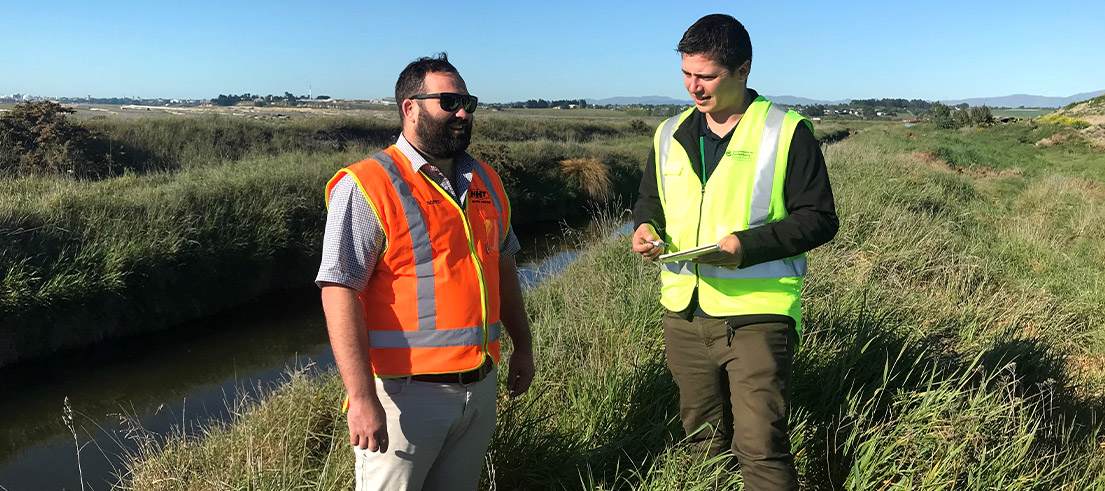
Native ‘neighbours’ top of mind for Washdyke businesses
Keeping on good terms with the neighbours is a top priority for businesses in Washdyke - even when they're fowl, squawky and prone to a bit of trespassing.
More than 60 different types of birds live, breed and visit Waitarakao Lagoon in Washdyke each year and serve as a visual reminder of why it's important for businesses in the area to carefully manage their environmental impact.
Hilton Haulage takes steps to protect Lagoon

Scott McAuley from Hilton Haulage talks to Environment Canterbury's Michael Nolan about stormwater management on site
Large transport business, Hilton Haulage, is one such business that has been planning ahead for many years to manage its 23-hectare site in a way that carefully considers dust, drainage and run-off.
Transport manager for the Southern Region, Scott McAuley, said the extra measures Hilton Haulage has put in place, including a large voluntary set-back area between the business and lagoon and additional riparian planting, makes good sense to the business and the locals that work there.
"Our team live locally, many with young families, and want to look after the lagoon and all its wildlife right on our doorstep - we have frequent visits from the local birds like the shags and gulls. Proactively improving our stormwater management means we're meeting our current consent conditions and also planning for a future that has higher environmental standards."
Key voluntary measures undertaken include the large amount of land left as a natural filtration area between the business and the main drain and lagoon. Riparian planting has also been carried out along swales (drainage waterways).
Creating awareness of industrial impacts on water quality
The site, which is the national head office for Hilton Haulage, is one of 200 Washdyke businesses targeted as part of a joint project with Timaru District Council (TDC) to increase awareness of industrial impacts on water quality at Waitarakao Washdyke Lagoon.
Zone lead Brian Reeves said properties that have existing consents for discharge, as well as those that don't, will all be part of the project, which has a focus on education around best stormwater practices.
"Our team, and our colleagues at TDC, have already visited about 50 sites and, so far, the response has been very positive.
"There's been a good understanding of what's required to manage the risk of pollutants getting into the waterways, but we've also been able to help offer some simple opportunities and solutions to make voluntary improvements.
"These include ideas like adding rumble strips to internal roads to shake off excess mud that could track onto the roads and run-off into waterways, keeping chemicals bunded and well away from stormwater drains in case of a spill, and adding riparian planting to help filter run-off and increase habitat for wildlife."
Pollution prevention to meet community expectations
Waitarakao is a wildlife refuge, home to more than 60 species of birds, aquatic life, and an important recreational spot for walkers and nature enthusiasts. It is also an important place for traditional mahinga kai food gathering.
It is through the Washdyke stormwater system that contaminants such as oil, grease, paint, metal particles, sediment and other spilt substances are able to reach the lagoon. Similarly, air discharges can also impact the environment and air we breathe.
The pollution prevention initiative is part of our role to meet the Timaru community's expectations for water and air quality.
